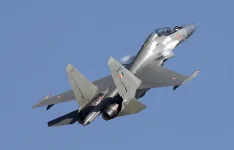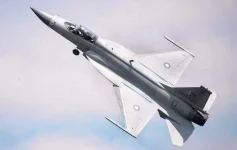In a major development for its strategic defence capabilities, India is on track to commission its two newest domestically-built nuclear ballistic missile submarines (SSBNs) by 2027.
The vessels, INS Aridhaman (S4) and its yet-to-be-named sister ship (S4*), will significantly enhance the nation's sea-based nuclear deterrent and second-strike capability, a crucial component of the country's nuclear policy.
The two advanced submarines are scheduled for a near-simultaneous entry into service, with INS Aridhaman expected by early 2026 and S4* following by late 2026 or early 2027.
According to sources, unforeseen delays during the extensive sea trials of INS Aridhaman have created a unique opportunity. The technical challenges and solutions discovered on the first vessel were immediately applied to its sibling, S4*, which was being built concurrently.
This parallel development has allowed the second submarine to catch up, ensuring both are delivered to the Indian Navy in a similar timeframe with improved reliability.
Representing a significant advancement over the original INS Arihant design, these 7,000-tonne S4-class submarines are larger and more potent. Built with an extended hull, they can carry a greater number of ballistic missiles.
The submarines are powered by an upgraded 83-megawatt Pressurized Water Reactor (PWR), offering enhanced performance and the ability to conduct extended patrols for up to 90 days without surfacing. This capability is vital for ensuring the submarines remain undetected and ready.
The primary role of these submarines is to guarantee a "second-strike capability." This is the ability to launch a retaliatory nuclear strike even if the country is attacked first. Submarines like the S4-class are considered the most survivable platforms for this mission, as they can hide deep in the ocean for months.
These vessels will be under the control of India’s Strategic Forces Command and are central to its policy of "credible minimum deterrence" amid growing strategic competition in the Indo-Pacific region.
A testament to India's growing self-reliance in complex defence technology, the S4-class submarines feature approximately 75% indigenous content.
Developed under the secretive Advanced Technology Vessel (ATV) project at the Ship Building Centre in Visakhapatnam, these vessels incorporate advanced features such as special coatings for superior acoustic stealth and domestically developed sonar systems.
The quiet launch of S4* in October 2024 underscored the program's progress away from the public eye.
The introduction of these two submarines will expand India's nuclear-powered ballistic missile submarine fleet to four, following the commissioning of INS Arihant in 2016 and INS Arighat in 2024.
This steady expansion paves the way for the next generation of much larger 13,500-tonne S5-class submarines, expected to arrive in the early 2030s.
The S4-class will be armed with either twelve K-15 short-range missiles or four K-4 missiles, the latter of which can strike targets up to 3,500 kilometres away, significantly extending India's strategic reach from the sea.




